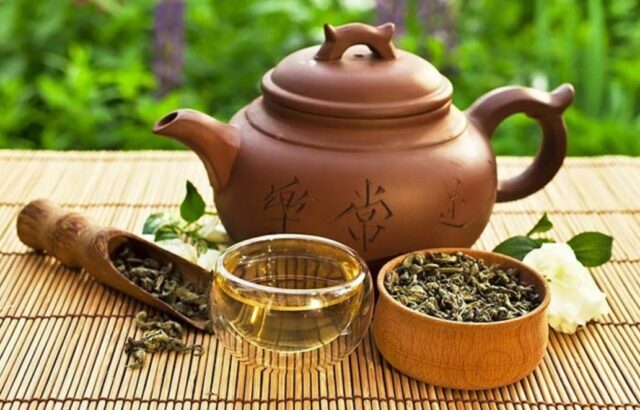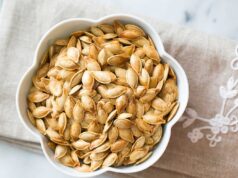Oolong tea is a type of green tea that has been oxidized in the withering process for between 1-2 hours. The oxidation also comes with some health benefits, which are thought to be responsible for its popularity in China and Japan.
Oolong tea is a type of Chinese green tea that has been around for centuries. It is also known as “wulong” or “black dragon”. Oolong tea has health benefits, including antioxidants and anti-inflammatory effects.

Oolong tea is a classic Chinese tea prepared from the leaves of the Camellia sinensis plant. It has a taste that is similar to black tea but with more nutty undertones. If you’ve been curious about Oolong, want to learn more about it, and perhaps start drinking it, this article will teach you all you need to know about the procedure and its health advantages.
Learn about the health advantages of different varieties of tea. Do you know what Rooibos tea is?

What is Oolong Tea, and how does it differ from other types of tea?
So, what is Oolong tea, and how does it compare to black tea? The majority of the variances in oolong tea are due to the way it is prepared. It’s a slightly oxidized tea grown mostly in China’s Fujian and Guangdong provinces, as well as Taiwan, that lies between between green and black tea on the light-dark spectrum.
Oolong tea, like other teas, is brewed from Camellia sinensis leaves. Green and black tea are made from the same plant.
The way the tea is picked and prepared is where the actual distinction lies.

The tea leaves are either dried immediately away or set out to wither and oxidize for a certain length of time after being plucked. The sort of tea that is produced is determined by this procedure. Allowing the leaves to oxidize for a longer period of time will result in darker leaves.
White and green teas are oxidized little, oolong teas are semi-oxidized, and black teas are completely oxidized by fermentation. The degree of oxidation will vary based on the intended effects of the manufacturer.
Oolong tea is often seen as a compromise or middle ground between green and black teas. If you want something more delicious and less vegetal than green tea, yet less tannic and bitter than black tea, oolong is the tea for you.
What Is the Flavor of Oolong Tea?
Depending on the extent of oxidation, oolong tea has a nice flavor with moderate to medium roasted characteristics. It is not as bitter as black tea. There are more nutty, buttery, and chocolaty overtones in this one.
Oolong is a terrific option, not only for the health advantages, but also for the refreshing flavor, whether you want a steaming cup of hot tea on a cold day or a tall glass of iced tea in the summer.

Tea Contains Beneficial Components
The major ingredients in tea that provide health advantages are catechins (a form of natural phenol and antioxidant) and flavonoids. Oolong tea includes theasinensins, which are flavinoids, as well as a combination of catechins and their oxidized polymeric components, such as theaflavins and thearubigins, which have various health benefits.
One of the components in tea that is affected by the oxidation process is catechin. The longer the leaves are left to oxidize, the less catechins are present in the final product. As a result, green tea contains more catechins than black tea.
While oxidation does diminish the amount of catechins in oolong, it also increases the amount of theaflavins and ehearubigins in the tea.
As a result, oolong tea will have a greater concentration of these components than green tea. These antioxidants may aid with some forms of airborne allergies, as well as slowing the progression of malignancies. They also have anti-inflammatory properties.

Health Benefits of Oolong Tea
Oolong tea is noted for its distinctive taste and scent, which is attributed to its high polyphenol content. Polyphenols are antioxidants that have been linked to a variety of health advantages.
Tea polyphenols have been discovered to help prevent certain cancers, lower the incidence of heart attacks and strokes, most likely via lowering cholesterol, and eliminate harmful bacteria in the mouth. According to Medical News Today, oolong tea may assist with weight reduction by improving fat metabolism.
Oolong tea looks to be beneficial in helping people with type 2 diabetes manage their illness properly. It may also aid in the relief of eczema discomfort.
Conclusion
Oolong tea is a delicious beverage that is enhanced by its many health advantages. Whether you’re seeking for a delightful drink or a soothing remedy for any ailment, oolong tea is certainly worth a try.
YOU MIGHT ALSO APPRECIATE

Do you think this article is interesting? It’s worth saving for later.


Laura is the creator and editor of Savored Journeys, a travel blog. She is committed to disseminating the most up-to-date knowledge about beverages from across the globe.
Oolong tea is a type of black tea that comes from China. It has been around for over 2,000 years and it is believed to have originated in the Yunnan province. Oolong tea has many health benefits because it contains antioxidants and polyphenols. Reference: is oolong tea black tea.
Frequently Asked Questions
What happens if you drink oolong tea everyday?
A: If you drink oolong tea every day, your organs will become very weak and damaged. Oolong tea is a natural detox, but drinking too much of it can cause serious damage to the body. This is due to caffeine in the leaves of the plant that would be absorbed into your blood stream if consumed on a daily basis.
What is the best time to drink oolong tea?
A: The best time to drink oolong tea is before breakfast, and the worst time for drinking oolong tea is after lunch.
Does Oolong fight inflammation?
A: No, Oolong is not an anti-inflammatory. Its a stimulant that can increase your heart rate and blood pressure.




